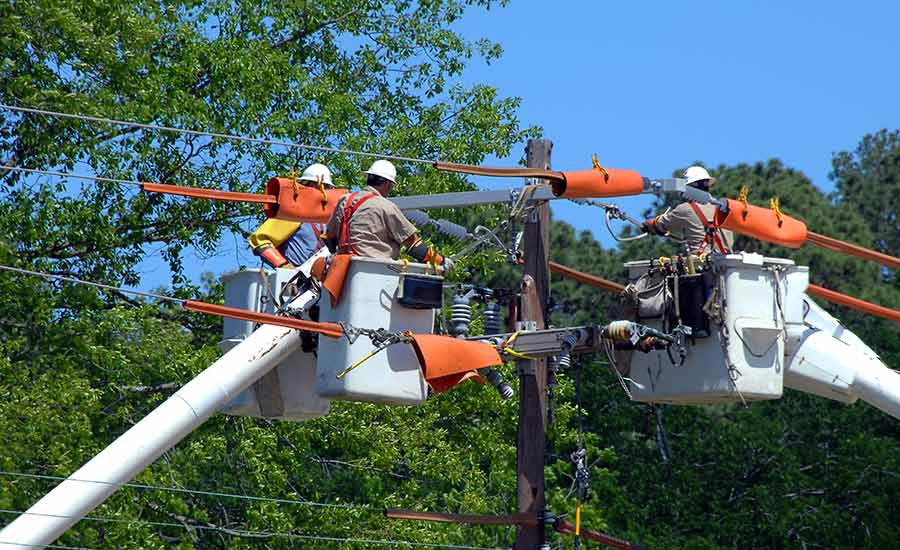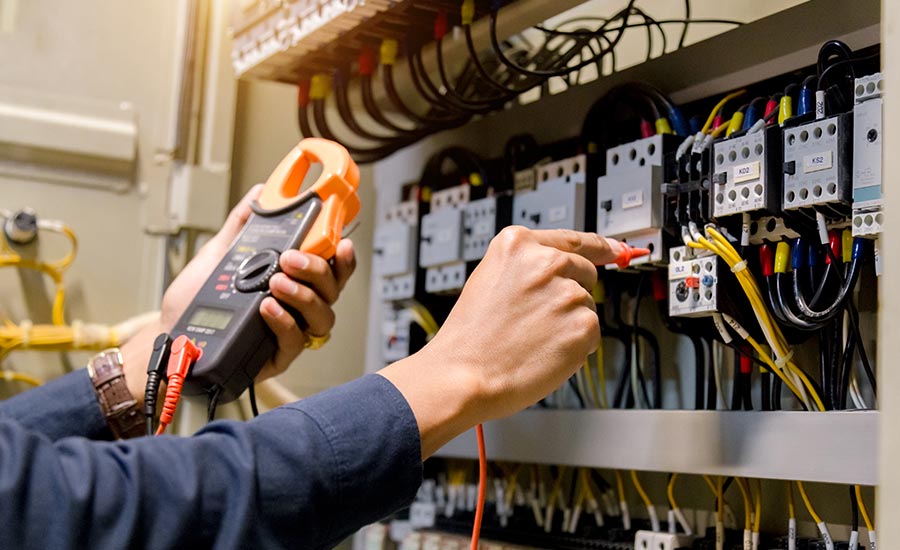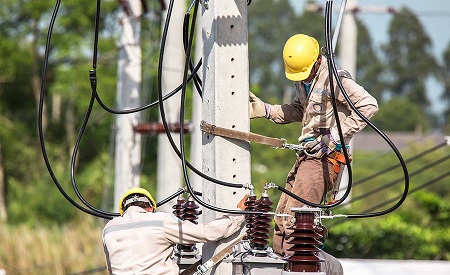
A 2018 survey by the S&C Electric Company found that around 21% of commercial and industrial businesses in the U.S. experience a power outage as often as once a month.
The good news is that standby power supply (SPS) can save you from the stress and chaos of a power outage.
The not-so-good news: even backup power supplies can sometimes fail, requiring repair or replacement to preserve that peace of mind.
In this blog post, we will advocate for the latter and explain why power supply repair outweighs replacing.
We will also explore the most common types of standby power supply equipment, the common signs of power supply failure and the average cost of power supply repair.
What Does Standby Power Supply Repair Typically Include?
The process of power supply repair usually follows a specific checklist of manipulations that depends on the cause of the failure.
These manipulations usually include:
- Cleaning: Sometimes, all it takes to get a SPS to work is a bit of cleaning. SPS units in an industrial or Manufactuing environment tend to be afflicted by dust, grime and debris. Any one of these elements can affect the performance of the unit if it accumulates around a vital component of the equipment.
- Repairing physical damage: Physical damage is another common reason for malfunctioning in SPS devices used in industrial applications. Such repairs can vary in their feasibility and complexity: a broken cable is a simple and inexpensive fix, while other degrees of physical damage in fiber optic cable cuts can render the equipment irreparable in cost-benefit terms.
- Replacing failed electronic components: Failed electronic components are among the most common causes of SPS malfunction. At the same time, they are usually less costly and labor-intensive than other types of repairs.
- Testing the equipment: The final and essential element of any repair process is to test the equipment to the Original Equipment Manufacturer (OEM) specifications or better. This testing will ensure that the repaired equipment functions the way it should and help eliminate potential repairs in the future.

What Are The Different Types Of Standby Power Supplies?
The power supply repair process outlined above and the signs of power supply failure we will explore shortly apply to all types of SPS and power supply equipment.
Standby power supply is the term that’s most used in the cable and manufacturing industries, but this technology also goes by the name of backup power supply or uninterruptible power supply terms that commonly refer to the devices used in the world of personal computing.
Regardless of the exact terminology, the purpose of this technology is the same – it provides power to vital equipment or devices if the main power supply fails.
With that in mind, let’s look at the three most common SPS designs:
- Offline SPS is the most basic and widespread design, which relies on two elements to do its job: a battery and a DC-AC inverter. When the SPS detects a voltage spike or power loss, the inverter connects to the battery and provides power to the connected devices.
- Line-Interactive SPS is a slight modification of the offline SPS design, with an added autotransformer, which allows for the output power to be adjusted according to the requirements of the connected equipment. This helps prolong the life of the battery within the SPS and increase the time frame during which it can provide backup power.
- Online SPS is the most sophisticated of the three designs, and it offers the most protection against voltage irregularities and power cuts. As the name suggests, online SPS devices are always “online” – as in, they continuously provide power to the connected devices without any power transfer switches between the battery and the inverter. This SPS design is most useful in environments with frequent power supply issues and sensitive equipment, as it kicks in practically seamlessly in case of a power cut.
Looking to repair your power supply system?
Get a quote!What Causes Standby Power Supply Failure?
Even though SPS devices are quite simple and, therefore, robust in their design, they are not exactly immune to failure.
The best way to prevent SPS failure is to regularly maintain it and test it to ensure that it doesn’t let you down at the worst possible time.
But if your SPS fails, here are the signs and the likely causes:
Signs Of SPS Failure
- Poor equipment performance: The easiest way to tell whether your SPS is failing is by its performance. If during a power outage or spike it fails to engage or engages with a considerable delay, you should have it diagnosed by a professional.
- Unregulated voltage output: This usually applies to line-interactive and other types of SPS that provide power of variable voltage. Even if your SPS responds to power supply issues in a timely manner, the supplied voltage may be incorrect, which could be a sign of upcoming failure.
- Low voltage output: Low voltage output is yet another sign that your SPS system may be close to failing entirely. Fortunately, it is usually an early sign, which means that the critical components of the equipment are still functional to some degree and may be fixed.
Causes Of SPS Failure
- Aging electronic components: Like many other types of electronic equipment, SPS systems are not age-proof and their performance tends to decline as they get older. Many SPS designs rely on batteries to provide the backup power, and the batteries decline over time to the point where the system can no longer function properly.
- Power spikes: SPS systems are designed to withstand and protect your equipment against power spikes. However, power spikes can be extreme to the extent where they might even deal considerable damage to the SPS, which can result in almost an immediate failure.
- Physical damage: Lastly, let’s not forget physical damage – yet another common cause of SPS failure. Power supply systems are robust, but they’re not likely to survive severe abuse.
Repair Or Replace? The Pros & Cons Of Each
If you’ve ever dealt with a faulty SPS, you’ve probably faced the dilemma of whether it makes more sense to repair or replace your system.
And even though power supply repair is often a more cost-effective solution, both have their pros and cons.
Pros Of Repairing
- Saves money: Industrial-grade SPS equipment is hardly cheap. The more sensitive equipment you have, the more capable your SPS system will need to be – and that’s a considerable investment. As such, repairing is usually more cost effective than purchasing a new unit.
- Increases ROI: As we’ve mentioned, standby power supply is, above all, an investment into the performance and stability of your business. By repairing your SPS instead of replacing it, you will increase your return on investment.
- More reliable: According to Commerical Electronics findings, new power supply systems have a 3.4% annualized failure rate (AFR), whereas the repaired systems have a 1.4% annualized failure rate within the first year.
Cons Of Repairing
- Aging components: SPS systems age and become less reliable. As such, an older system might have a lot more components that need to be replaced or refurbished, which can make the repair process costly and time-consuming.
- Not always viable: Unfortunately, the prospect of repairing your backup power supply system may not always be viable from an economic standpoint. If the causes of failure are very costly to fix, it might make more sense for you to purchase a brand-new unit.
Pros Of Replacing
- New equipment: At the end of the day, nothing beats brand new equipment – slick, shiny and covered by warranty should something go wrong with it.
- Newest technology: SPS designs are constantly improved and perfected by manufacturers, with new security measures and features. If you’re after the newest technology, you should consider purchasing a brand-new system.
Cons of Replacing
- Costs more: As we’ve mentioned above and will explore more in the upcoming section, brand new SPS equipment can be a considerable investment for your business. If you’re not willing to commit a sizable portion of your income to purchasing it, you might be better off repairing your current system.
- Less reliable: “New” might mean “slick and shiny”, but it does not always mean more reliable. New models of SPS equipment can sometimes hide underlying defects and tend to be more sophisticated, which may make them more prone to failure and more costly to repair.

How Much Does Standby Power Equipment Repair Cost?
Industrial-grade SPS systems, such as those used to backup data centers or server hubs, tend to command fittingly impressive price tags.
We’re talking anywhere between tens of thousands of dollars and as much as $200,000 – hence why they can be considered a “considerable investment”.
This, of course, begs the question: just how much more affordable would power supply repair be compared to purchasing new equipment?
The answer is: typically, a third or less than the cost of purchasing a new unit. This means that you might end up saving thousands of dollars if you go the “repair” route instead of the “replace” one.
Need to repair your power supply system?
Get a quote!Standby Power Supply Repair Takeaways
Stanby power supply systems tend to be relatively robust and reliable. Nevertheless, they are not completely immune to malfunctioning and failure – whether it’s due to age or physical damage.
Fortunately, a faulty piece of SPS equipment does not necessarily mean having to invest in purchasing a new unit.
In most cases, power supply repair makes more sense – both in terms of cost and future reliability.




